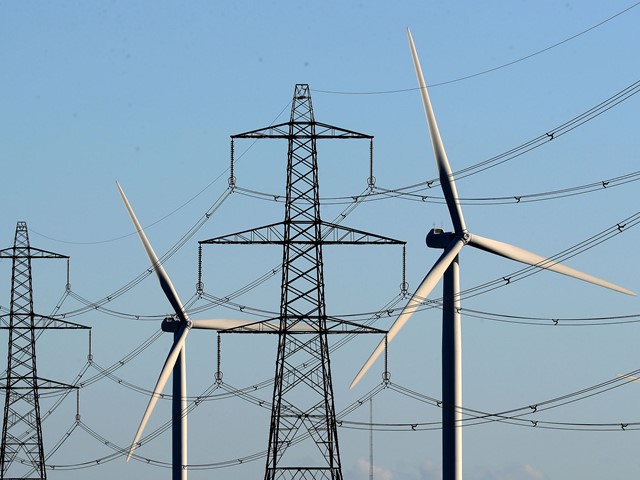In a world where the consequences of climate change are becoming increasingly evident, the shift towards renewable energy sources is not just an option but a necessity. The depletion of fossil fuels and the environmental damage they cause have spurred a remarkable transformation in the energy landscape. As we peer into the horizon of the future, it’s evident that renewable energy is poised to take center stage, driven by a multitude of trends and innovations that are reshaping the way we generate, store, and utilize power.
1. Solar Power Revolution: Beyond Traditional Panels
Solar power has long been a frontrunner in the renewable energy race, but innovations are pushing the envelope even further. Traditional solar panels have faced limitations due to their bulkiness and relatively low energy conversion rates. However, breakthroughs in materials science have led to flexible, lightweight solar panels that can be integrated into a variety of surfaces, from clothing to windows, ushering in a new era of solar integration. Additionally, solar paint, which can be applied like conventional paint, is being developed to transform any surface into a solar energy generator.
2. Wind Energy Redefined: Offshore and Urban Solutions
Wind energy, another stalwart of renewable power, is seeing a shift towards offshore installations. Offshore wind farms are advantageous because they can harness stronger and more consistent winds, offering a higher energy yield compared to their onshore counterparts. Countries like Denmark, the UK, and China are leading the charge in offshore wind development. Moreover, urban wind solutions are being explored, with vertical-axis wind turbines designed to capitalize on the complex wind patterns of built environments.
3. The Surge of Energy Storage: Batteries and Beyond
The intermittent nature of renewable sources like solar and wind has necessitated advancements in energy storage technologies. Lithium-ion batteries have dominated the market, but researchers are striving to develop alternatives that are more sustainable, affordable, and efficient. Solid-state batteries hold promise with their higher energy densities and improved safety profiles. Furthermore, novel methods like gravity storage, which uses excess energy to lift heavy objects and releases it by lowering them, are being explored for large-scale, longer-duration storage.
4. Smart Grids and Energy Management
The future of renewable energy isn’t just about how we generate it but also about how we manage and distribute it. Smart grids are intelligent, self-regulating systems that balance energy supply and demand while seamlessly incorporating various sources, including renewables. These grids employ real-time data analytics to optimize energy distribution, reduce wastage, and prevent blackouts. Additionally, smart meters in homes enable consumers to monitor and adjust their energy usage according to real-time pricing, fostering a culture of conscious consumption.
5. Hybrid Systems for Enhanced Efficiency
Hybrid energy systems that combine different renewable sources or pair renewables with traditional sources are gaining traction. For instance, solar panels and wind turbines can complement each other, as sunny days might not always be windy and vice versa. These hybrid setups increase energy production consistency and can even incorporate energy storage components for uninterrupted supply. Furthermore, coupling renewable systems with technologies like tidal or geothermal energy can offer reliable power in diverse conditions.
6. The Role of AI and Data Analytics
Artificial Intelligence (AI) and data analytics are becoming instrumental in optimizing renewable energy production and consumption. AI algorithms can forecast energy production from renewable sources, enabling grid operators to make informed decisions. Machine learning algorithms can also predict maintenance requirements for solar panels and wind turbines, minimizing downtime and improving system reliability. Moreover, AI-powered energy management systems in homes can learn consumption patterns and adjust HVAC systems and appliances to maximize energy efficiency.
7. Electrification of Transportation
The future of renewable energy is intricately linked with transportation. The shift towards electric vehicles (EVs) is not only reducing carbon emissions but also creating new opportunities for renewable energy integration. EV charging stations can be powered by renewable sources, fostering a symbiotic relationship. As EV adoption grows, vehicle-to-grid (V2G) technology allows EVs to not only draw power from the grid but also return excess energy to it, acting as mobile storage units.

8. Policy and Investment Dynamics
Government policies and investments play a pivotal role in shaping the trajectory of renewable energy. Many countries have set ambitious targets for renewable energy adoption and carbon emission reduction. Incentives such as tax credits, subsidies, and feed-in tariffs encourage individuals and businesses to invest in renewable infrastructure. As the renewable energy sector continues to grow, more job opportunities are created, spurring economic growth.
9. Challenges and Future Prospects
While the future of renewable energy looks promising, there are challenges to address. Energy storage, especially for large-scale applications, needs further innovation to store excess energy for use during periods of low generation. The intermittency of renewables requires efficient grid management and backup systems. Additionally, the environmental impact of manufacturing and disposing of renewable technologies should be carefully managed. Visit WhoTimes where you will find lots of great information and practical advice about the future of renewable energy.
In conclusion, the future of renewable energy is a fascinating tapestry woven with diverse trends and innovations. As technology marches forward, solar and wind power are shedding their constraints, energy storage solutions are becoming more sophisticated, and smart grids are ushering in a new era of efficient energy management. The marriage of AI and renewable energy is optimizing production and consumption, while the electrification of transportation is redefining the energy landscape. All these advancements are underpinned by supportive policies and investments, driving the transition towards a cleaner, more sustainable future. While challenges remain, the collective efforts of governments, industries, and individuals are propelling us toward a future where renewable energy takes center stage in powering our world.








